or 📲 Call/Text 941-400-4928
or 📲 Call 941-400-4928
Welcome To The Future of Men's Health, Peak Performance & Longevity Without Pharmaceutical Dependency or Constant Injections
Transform Your Body, Reset Your Health & Recalaim Your Edge In As Little As 90-120 Days With Dr. Andreas' PEAK PERFORMANCE PROTOCOL Specifically Designed For Busy Men & High Performers
If you're wanting to prevent or currently facing challenges like low testosterone, low energy, low libido, lack of focus, insulin resistance, chronic inflammation, cardiovascular disease, diabetes, high blood pressure, metabolic syndrome your journey back to exceptional health, performance and longevity your journey starts today with:
Dr. Andreas' Peak Performance Protocol
Dr. Andreas puts all the pieces together and connects the dots so you can focus on one thing – results.
Four Simple Steps To Get Started:
Four Simple Steps
To Get Started:

Step 1: Book Your Virtual Consultation
Where are you now?
Why are you there?
Where do you want to be?
Health & Lifestyle workup
Develop plan of action
We get to work

Step 2: Precision
Diagnostics
Comprehensive Lab workup: Complete hormone profile, Metabolic health, Inflammation, Cholesterol, Insulin & more
Genetic testing accessing 134 genes affecting hormones, metabolism, inflammation, detoxification, fitness, weight, hormones, your response to diet/supplements & more

Step 3: Obtain Your Custom Protocol
Custom Fitness Program
Custom Meal Plan
Custom Supplement Program
Complete Lifestyle Blueprint
Develop IOH Mindset
All based on your individual lab results, history & goals

Step 4: We Get to Work! Access IOH Private Client App
Private messaging with Dr. Andreas during your program
Track every workout, rep and set
Track your daily meal plan
Upload your wearable health data (if applicable)
Join our private men's community
Daily motivation and support
The Ultimate in Accountability and Support
Tutorials & More...
In other words - 95% of the work is DONE FOR YOU!
All you have to do is execute your custom, tailor made plan!
No more guessing, frustration or spinning your wheels.
As you improve, we retest, refine, and repeat to optimize your health and performance while teaching you how to install your new Peak Performance Blueprint for LIFE
Step 1: Book Your Virtual Consultation
Where are you now?
Why are you there?
Where do you want to be?
Health & Lifestyle workup
Develop plan of action
We get to work
Step 2: Precision Diagnostics
Comprehensive Lab workup: Complete hormone profile, Metabolic health, Inflammation, Cholesterol, Insulin & more
Genetic testing accessing 134 genes affecting hormones, metabolism, inflammation, detoxification, fitness, weight, hormones, your response to diet/supplements & more
Step 3: Obtain Your
Custom Protocol
Custom Fitness Program
Custom Meal Plan
Custom Supplement Program
Complete Lifestyle Blueprint
Develop IOH Mindset
All based on your individual lab results, history & goals
Step 4: We Get To Work
IOH Private Client App
Private messaging with Dr. Andreas during your program
Track every workout, rep and set
Track your daily meal plan
Upload your wearable health data (if applicable)
Join our private men's community
Daily motivation and support
The Ultimate in Accountability and Support
Tutorials & More...
In other words - 95% of the work is DONE FOR YOU!
All you have to do is execute your custom,
tailor made plan!
No more guessing, frustration or lack of results.
As you improve, we retest, refine, and repeat to optimize your health and performance while teaching you how to install your new Peak Performance Blueprint for LIFE!
HERE'S A SIMPLE QUESTION FOR YOU...
How Do You Want To Age, To LIVE?
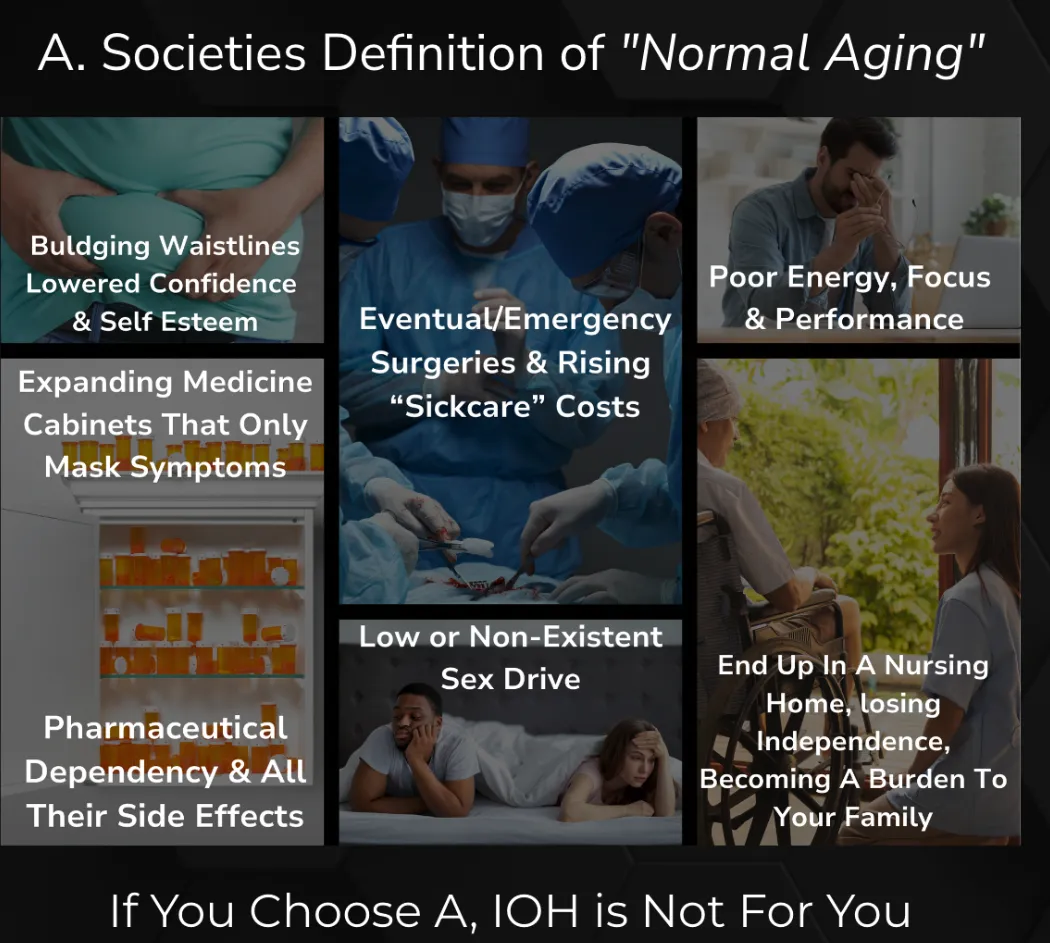

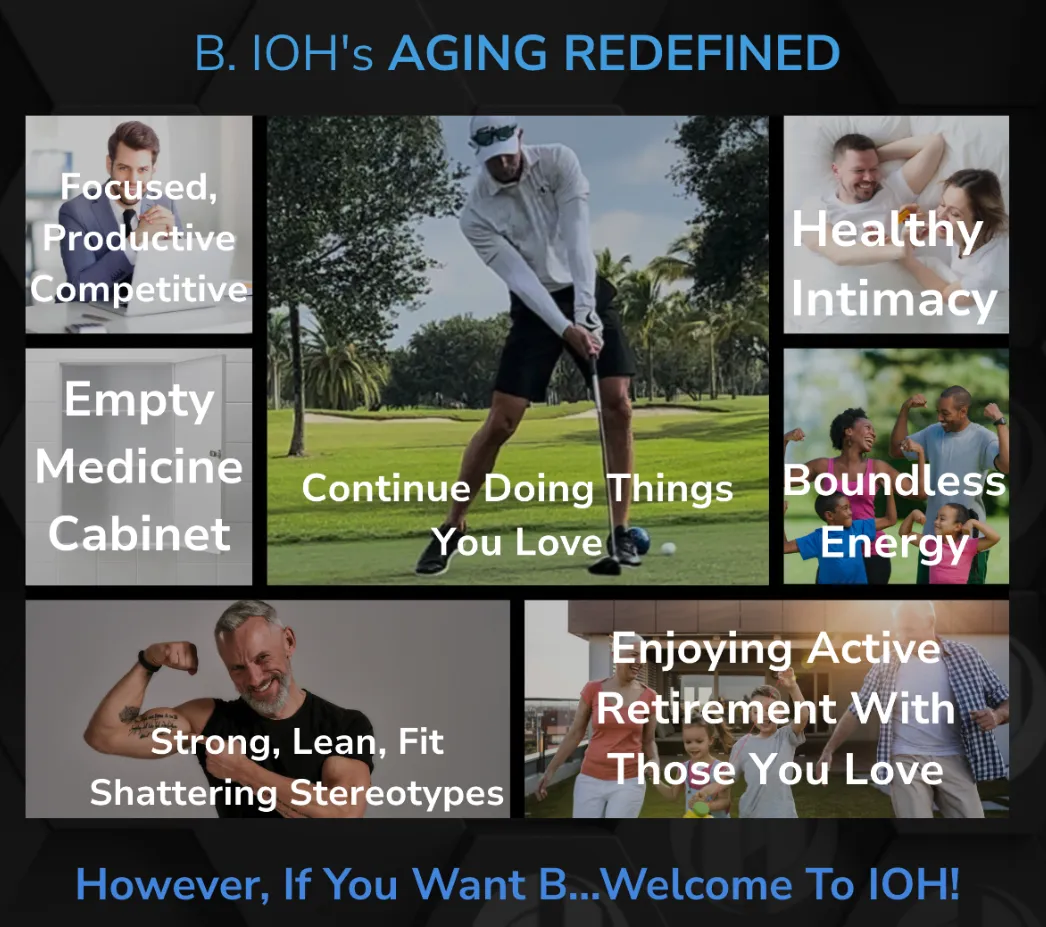
Transform your mental & physical fitness in just 90 - 120 Days with Dr. Andreas'
PEAK PEFORMANCE PROTOCOL, custom built for High Achieving MEN who
KNOW their best years are not behind them.
Your Custom Tailored Peak Performance Protocol Includes:

Your Custom Tailored Peak Performance Protocol Includes:

Complimentary Discovery Call
Each client begins with a free discovery call or consultation to assess whether we can assist you and if we are a suitable match for collaboration. Once mutual agreement is reached, we will commence crafting your personalized Peak Performance Protocol.

Customized Protocol
Following your Discovery Call, we proceed with your initial virtual appointment to thoroughly examine your health history and discuss your objectives. Dr. Andreas will then personally design your comprehensive, customized Peak Performance Protocol.
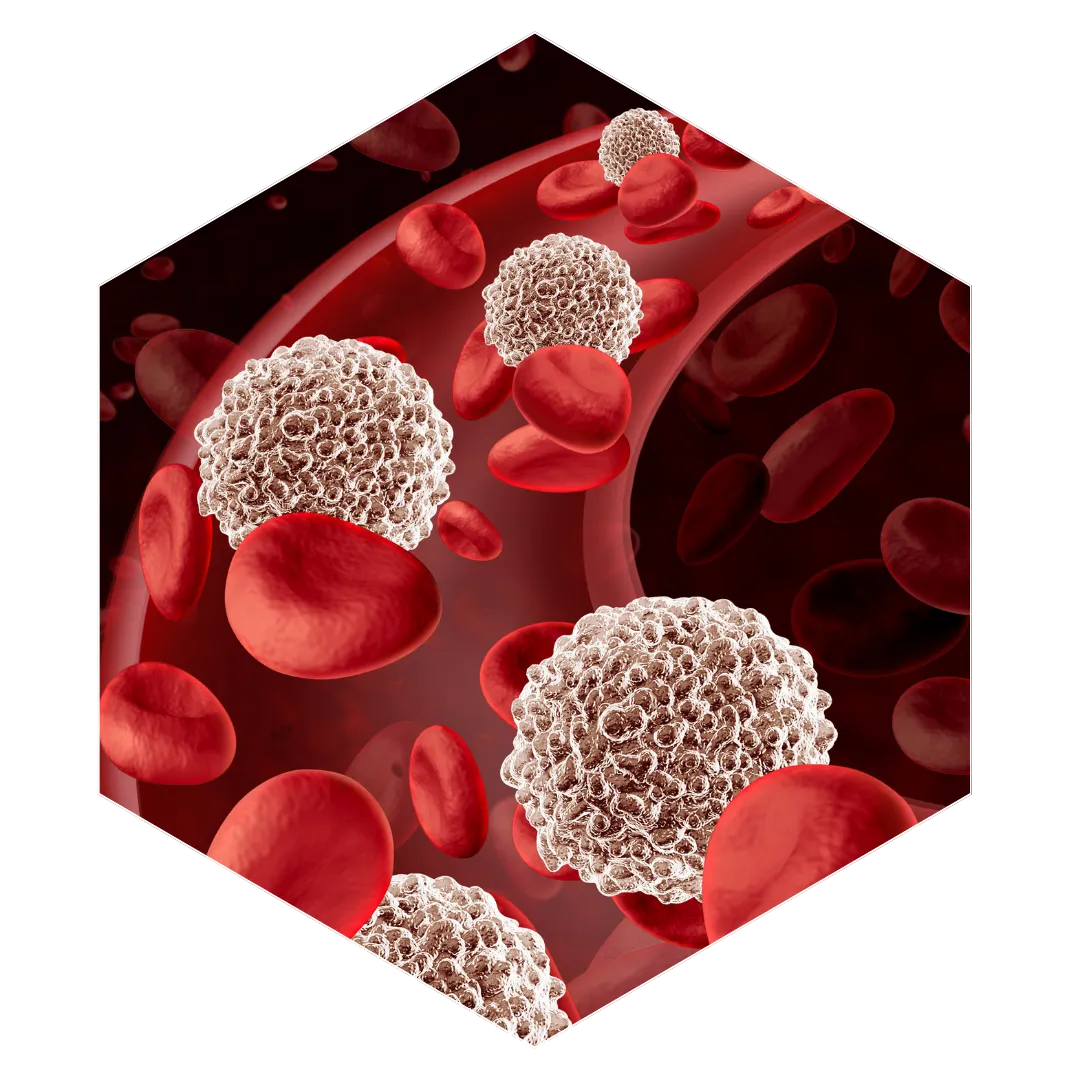
Individual Lab & Genetic Analysis
Personalized Men's laboratory panels & Genetic testing designed evaluate comprehensive biomarkers, encompassing hormones, lipids, thyroid function, inflammation, blood sugar levels, metabolism, vitamin & mineral deficiency analysis to name a few. Tests most providers miss critical to your longevity and healthspan. Stop guessing and start testing.

Custom Nutrition/Meal Plan
You will receive a tailor-made meal plan that aligns with your health history, lab analysis, genetic testing and objectives. Through the IOH Custom App, you can easily modify, make adjustments, and monitor your food intake. Dr. Andreas will provide oversight, offer recommendations, and support you throughout your protocol.
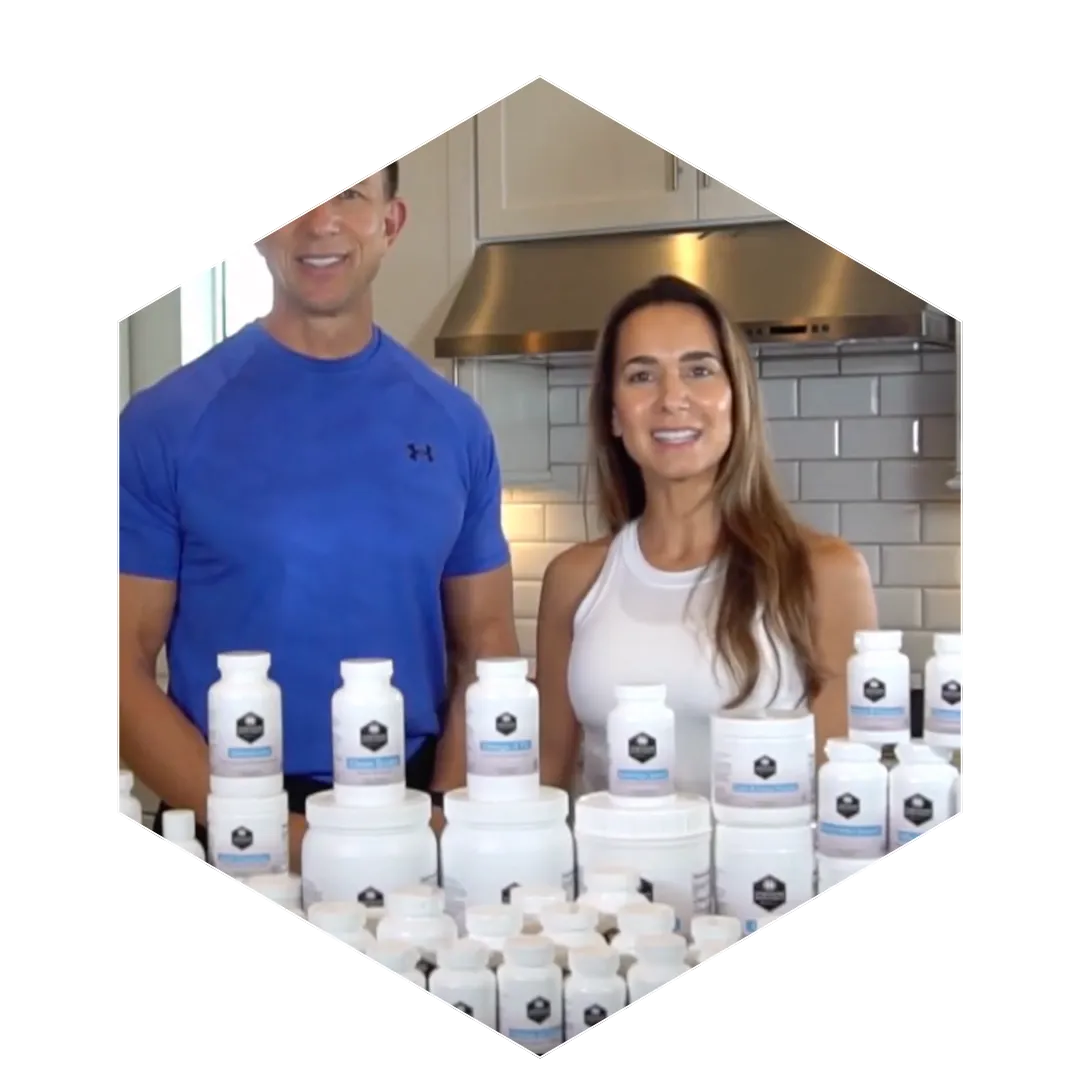
Custom Supplement Protocol
You will be provided with a personalized supplementation program tailored to your specific requirements. No more uncertainty or haphazard supplement intake – Dr. Andreas' recommendations are grounded in your laboratory results and health history, ensuring their suitability for your needs.

Custom Training Program
The most significant contributor to lowering your risk of all-cause mortality is physical fitness. Remove the uncertainty by adhering to a proven plan that requires minimal time and effort but yields maximum returns on investment. Achieve ENDLESS benefits in less than 3-4 hours of weekly training for the ultimate ROI.
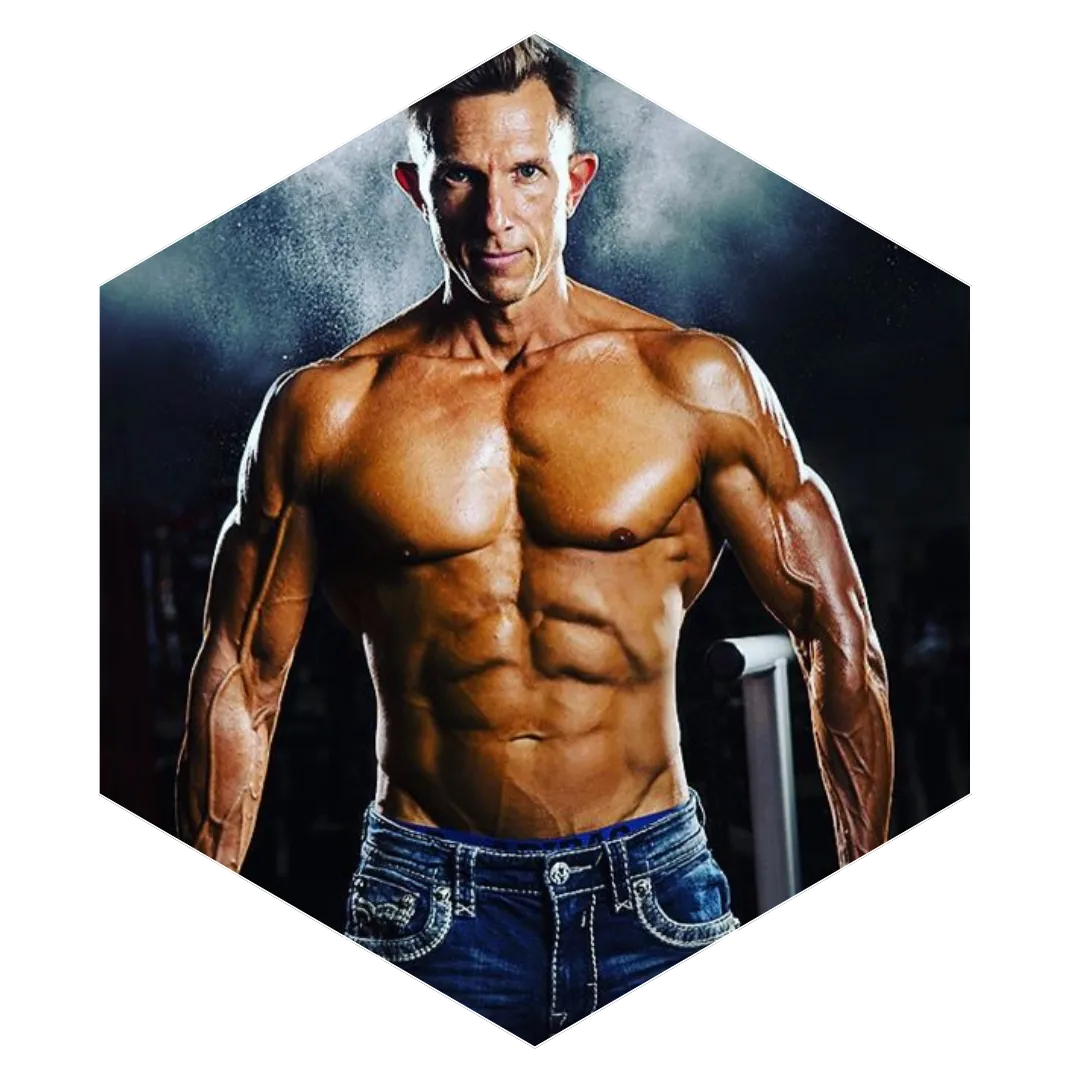
Develop The IOH Mindset
Our objective is to instill the correct behaviors and decisions that enhance not only your lifespan but also your healthspan. It all begins with your mindset and emotions regarding your most valuable asset – your health. Without the right mindset, all the tactics and strategies are irrelevant.

Data Driven Results
Our app incorporates cutting-edge technology to monitor and assess your progress. Depending on your program, we may conduct follow-up assessments at the end of your program, including new internal laboratory tests to quantify your results, complementing the external changes you observe and feel.

Access To The IOH APP
The IOH App acts as the central hub for your complete AR Protocol, encompassing fitness, nutrition, tracking, metrics, community support, and more, all conveniently accessible wherever life leads you.

Accountability/Support
Achieving your goals hinges on accountability and support. Otherwise, you would have already reached your desired destination through your past endeavors. Engage in direct interactions with Dr. Andreas through the private messaging feature within the app, and receive additional support and benefits.
Transform Your Health, Fitness & Performance Naturally With Your Own Personalized Peak Performance Protocol
We Go Beyond The Sixpack, The Scale, The Mirror And Include A
Customized Focus On Your Internal Health & Metrics That Matter For Your Health & Longevity
HERE'S A SIMPLE QUESTION FOR YOU... How Do You Want To Age, To LIVE?



Transform your mental & physical fitness in just 90 - 120 Days with Dr. Andreas'
PEAK PEFORMANCE PROTOCOL, custom built for High Achieving MEN who KNOW their best years are not behind them.
Your Custom Tailored Peak Performance Protocol Includes:

Your Custom Tailored Peak Performance Protocol Includes:

Complimentary Discovery Call
Each client begins with a free discovery call or consultation to assess whether we can assist you and if we are a suitable match for collaboration. Once mutual agreement is reached, we will commence crafting your personalized Peak Performance Protocol.

Customized PPP Protocol
Following your Discovery Call, we proceed with your initial virtual appointment to thoroughly examine your health history and discuss your objectives. Dr. Andreas will then personally design your comprehensive Peak Performance Protocol.

Individual Lab & Genetic Analysis
Personalized Men's laboratory panels & genetic testing designed evaluate comprehensive biomarkers, encompassing hormones, lipids, thyroid function, inflammation, blood sugar levels, metabolism, vitamin & mineral deficiency analysis to name a few. Tests most providers miss critical to your longevity and healthspan. Stop guessing and start testing.

Custom Nutrition/Meal Plan
You will receive a tailor-made meal plan that aligns with your health history, lab analysis, genetic testing and objectives. Through the IOH Custom App, you can easily modify, make adjustments, and monitor your food intake. Dr. Andreas will provide oversight, offer recommendations, and support you throughout your protocol.

Custom Supplement Protocol
You will be provided with a personalized supplementation program tailored to your specific requirements. No more uncertainty or haphazard supplement intake – Dr. Andreas' recommendations are grounded in your laboratory results and health history, ensuring their suitability for your needs.

Custom Training Program
The most significant contributor to lowering your risk of all-cause mortality is physical fitness. Remove the uncertainty by adhering to a proven plan that requires minimal time and effort but yields maximum returns on investment. Achieve ENDLESS benefits in less than 3-4 hours of weekly training for the ultimate ROI.

Develop The IOH Mindset
Our objective is to instill the correct behaviors and decisions that enhance not only your lifespan but also your healthspan. It all begins with your mindset and emotions regarding your most valuable asset – your health. Without the right mindset, all the tactics and strategies are irrelevant.

Data Driven Results
Our app incorporates cutting-edge technology to monitor and assess your progress. Depending on your program, we may conduct follow-up assessments at the end of your program, including new internal laboratory tests to quantify your results, complementing the external changes you observe and feel.

Access To The IOH APP
The IOH App acts as the central hub for your complete AR Protocol, encompassing fitness, nutrition, tracking, metrics, community support, and more, all conveniently accessible wherever life leads you.

Accountability/Support
Achieving your goals hinges on accountability and support. Otherwise, you would have already reached your desired destination through your past endeavors. Engage in direct interactions with Dr. Andreas through the private messaging feature within the app, and receive additional support and benefits.
Transform Your Health, Fitness & Performance Naturally With Your Own Personalized Peak Performance Protocol
We Go Beyond The Sixpack, The Scale, The Mirror And Include A Customized Focus On Your Internal Health & Metrics That Matter For Your
Health & Longevity
Meet Dr. Andreas
"I have one goal for all our clients, to die young as late as possible doing more of what you love medically and pharmaceutically independent."
Doctor of Chiropractic Specializing in Functional Medicine, Nutrition, Sports Performance & Anti Aging
B.S. Health and Exercise Science from The University of Richmond
33+ Years of Health, Wellness and Fitness Coaching Experience
International Keynote Speaker
Supplement Formulator and Consultant
3x Ironman Triathlete
Master Men's Physique Competitor
Avid Competitive Golfer
Proud Husband and Father of 3

"Dr. Andreas is NOT your ordinary Doctor. He embodies his education unlike ANY physician I've ever met!" John H. ~ Actual Client
DrAndreas knows what it's like to be a busy father, entrepreneur, husband, executive. He also knows what it's like to stare down the barrel of a few health challenges and still come out on top without the use of medications or pharmaceutical dependency and all their known risks.
What sets Dr. Andreas apart is that he's not your typical 20-year-old fitness model or former professional athlete teaching you how to stay fit (although there's nothing wrong with that). Instead, he's a 54-year-old physician, as of 2024, who has conquered significant obstacles in life. HIS OWN IOH journey (as told in this deeply personal video) is a testament to what may still be possible for you.
We all have a unique story to tell. So, I ask you: what will your new story be when you declare, "It's Only Halftime," no matter the challenges you face today?
Your next chapter is waiting to be written, and Dr. Andreas is here to help you craft a story of resilience, vitality, and unstoppable determination through optimal, natural health and performance. After all, without your health, what do you truly have?
These Men Where READY To Face The TRUTH...What's Your Excuse?
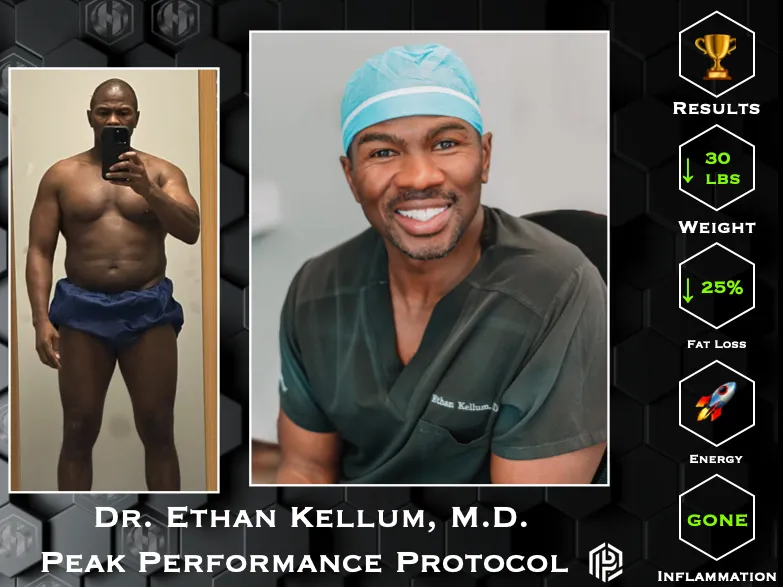
Dr. Ethan Kellum, M.D.
Team Physician for the Tennessee Titans
Over the past several months, I committed myself to Dr. Andreas’s Peak Performance Protocol, and the results have been nothing short of transformative. As a physician, I am naturally skeptical and highly selective about the programs I follow—but this protocol exceeded every expectation I had, both personally and professionally.
When I began, I was carrying an extra 30 pounds that felt impossible to lose. I had tried dieting, exercising harder, and relying on sheer willpower, but nothing created sustainable change. Dr. Andreas’s approach was completely different.His protocol was structured, science-based, and designed to work with my physiology rather than forcing my body into extremes.
Within just a few weeks, I noticed clearer energy, reduced inflammation, improved sleep, and sharper mental clarity. The weight began coming off steadily and consistently—not through deprivation, but through alignment and metabolic reset. By the end of the program, I had lost 30 pounds, and more importantly, I felt like myself again.
This protocol didn’t just help me lose weight; it helped me regain discipline, confidence, and control over my health. As a medical professional who spends each day helping others feel better, it was both humbling and empowering to receive the kind of support and structure I truly needed.
I am deeply grateful to Dr. Andreas for his guidance, expertise, and belief in my ability to change. I wholeheartedly recommend his protocol to anyone ready to take control of their health, restore their metabolism, and truly transform their body from the inside out.
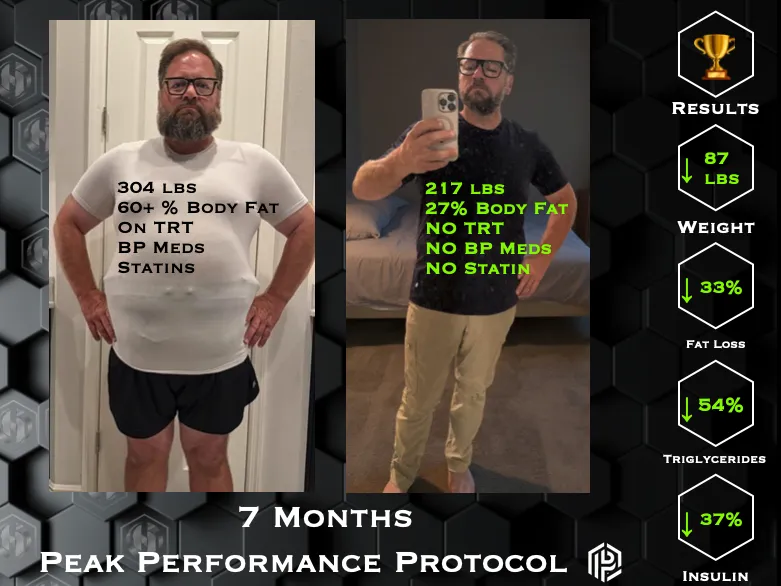
Christopher M.
Quit TRT! No more Medications - No BP Med's, No Statins, No Shots!
When Christopher first came to me, his testosterone had completely tanked in late 2024, dropping into the low 200s. His doctors immediately put him on TRT. Within weeks, his levels skyrocketed dangerously high—well over 1,500 ng/dL. Despite the extreme numbers on paper, he wasn’t feeling any better.
By February, he reached back out. In March, we went to work together. He quit TRT cold, and through the nutrition, training, and supplementation protocol we built, his body began to heal itself. Not only did the weight start coming off and muscle start appearing, but his testosterone has naturally rebounded close to 500 ng/dL—and in my experience, that will continue to climb as we raise the bar on his fitness and metabolic health. Our new shared goal: 12% body fat and maintain his empty medicine cabinet at 56!
Here’s Christopher’s own words:
“I began my transformation with IOH in March 2025 at 52 years old. On March 16, I weighed in at 301 pounds with 60% body fat. I had tried online coaches before and was honestly ready to give up on the idea altogether. I thought I needed someone in person to keep me accountable—until I came across IOH.
After an initial conversation, I decided to give it one last shot. When I received my customized plan, I was skeptical. It included things like rice and sweet potatoes, and I immediately thought, ‘This isn’t going to work. I need fewer carbs—75 grams a day is too much for me.’ But I committed to trying it exactly as designed.
To my surprise, I started making progress—real, visible progress. At 301 pounds, I expected some weight to come off, but not like this.
Starting (3/16/25): 301 lbs, 60% body fat
Progress (7/13/25): 238 lbs, 34% body fat
The meal plan was no joke. I was eating so much food, it was hard to finish some days:
I followed the workouts, ate the meals, and the weight started to fall off. But what really surprised me was how my body began to change—not just smaller, but stronger and more defined. I actually started to see muscle. I felt better and moved better. I also dropped from wearing tight XXXL shirts to well-fitting XLs.
At first, I just wanted to be thinner and maybe—just maybe—look a little fit. Now? I know I’ll look fit. I’m currently planning to do another round of coaching to see how far I can take this. I once thought 15% body fat was the dream—maybe even impossible.
Now, 12% sounds realistic. And some days, I think… why not shoot for 10%?
The journey isn’t over—but the results so far speak for themselves. If you’re ready to change and truly commit, follow the program. It works.
Thank you,
Chris M.
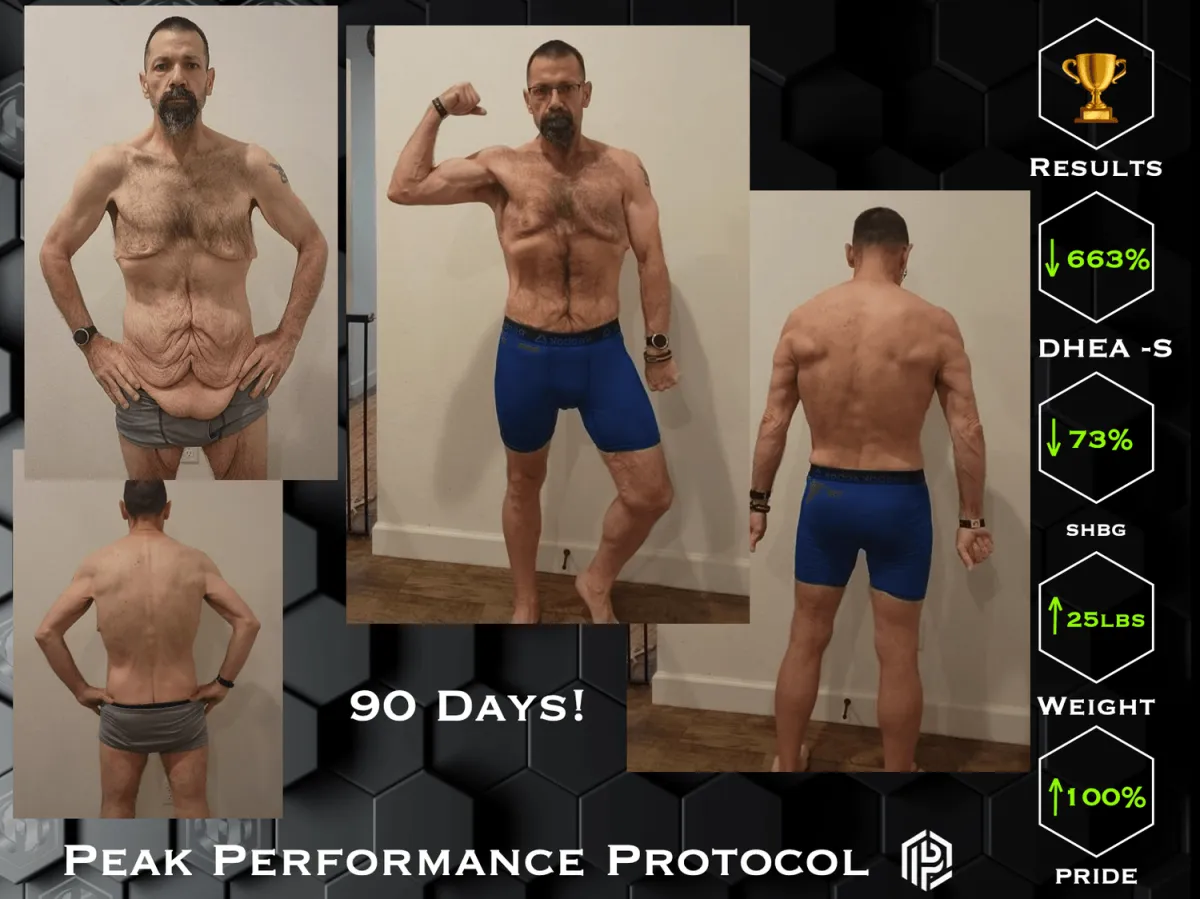
Eric M.
I started my Peak Performance Protocol three months ago, transitioning from a skinny fat build at 156 lbs with zero muscle tone to a defined muscle build at 181 lbs. The beginnings of visible abdominal muscles are now a testament to the program's effectiveness. Initially, I was hesitant to invest in a program solely for self-improvement, feeling guilty for doing something "just for me." However, it quickly became clear that this was an investment in my family and professional career. The program's impact has been profound, and I have only three regrets:
1. I should have started years ago.
2. I only signed up for a three-month program.
The program is worth every penny, and the transformation is real. Dr. Andreas has been an exceptional mentor and coach, providing the skills and knowledge to continue my journey towards becoming the fittest version of myself. The program has changed my life and mindset, delivering results beyond my expectations. I am forever grateful.
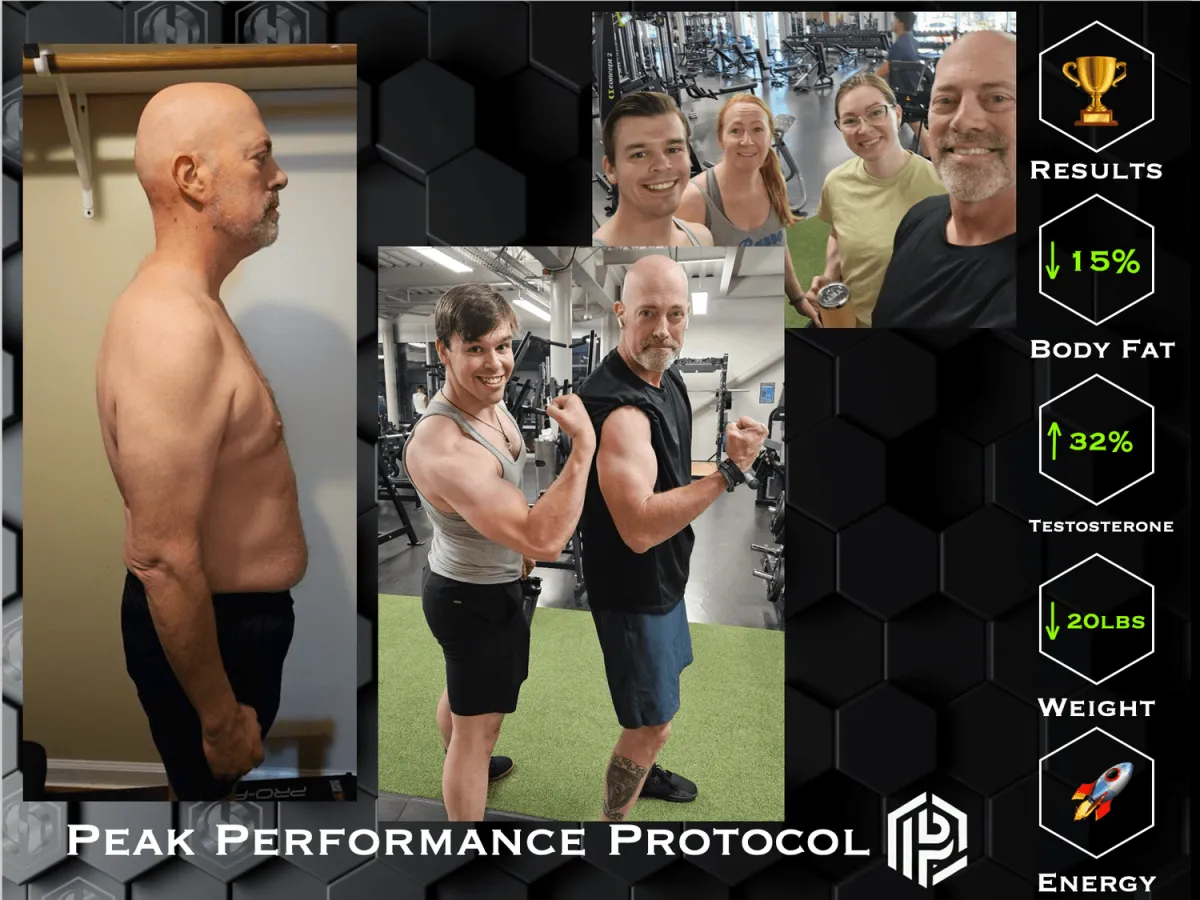
Jason K.
Jason tried TRT to only have severe skin reactions from head to toe! Here's what he did instead.
"I had been relatively active through my 30s, 40s, and even into my early 50s, but it was sporadic at best. By 59, I found myself out of shape, fatigued, and honestly a little depressed. My blood pressure had climbed so high my doctor doubled my medication and added another. I felt unhealthy, unmotivated, and I didn’t want to participate in much of anything anymore. I tried fixing it on my own—reading everything I could online—but I quickly got overwhelmed. So many conflicting programs, diets, and miracle supplements… I didn’t even know where to start. I tried shortcutting the process with hormone replacement, but my body strongly rejected it and I ended up with even more problems. I was truly discouraged.
That’s when I found Dr. Andreas and his website “It’s Only Halftime.” From the first consultation, I could tell his approach was different—structured, tailored, and rooted in actual science. I committed to his Peak Performance Protocol, and it was the best decision I’ve ever made for my health. Over the first 90 days, I lost 20 pounds of fat and added lean muscle. My energy returned, my mental clarity improved, and my outlook on life completely changed.
I cut my blood pressure meds in half. Even my skin looked healthier. Lab results confirmed what I was feeling: my triglycerides dropped from over 200 to 69 mg/dL (a 66% decrease), CRP fell 64%—eliminating almost all inflammation—and homocysteine dropped 33%, improving my cardiovascular and brain health. Fasting insulin went down by over 30%, and my vitamin D and testosterone levels started climbing naturally without any TRT.
Now six months in, I’m leaner, stronger, and holding my own in the gym with my 28-year-old son-in-law. I’m hiking, biking, kayaking, and—most importantly—I can pick up my grandkids and get myself off the floor after playing with them. My wife loves how I look with my shirt off, and I love how I feel walking into my 60s as the healthiest version of myself. This isn’t the end—it’s only the beginning. I’m excited to keep working with Dr. Andreas and see how far I can take this."
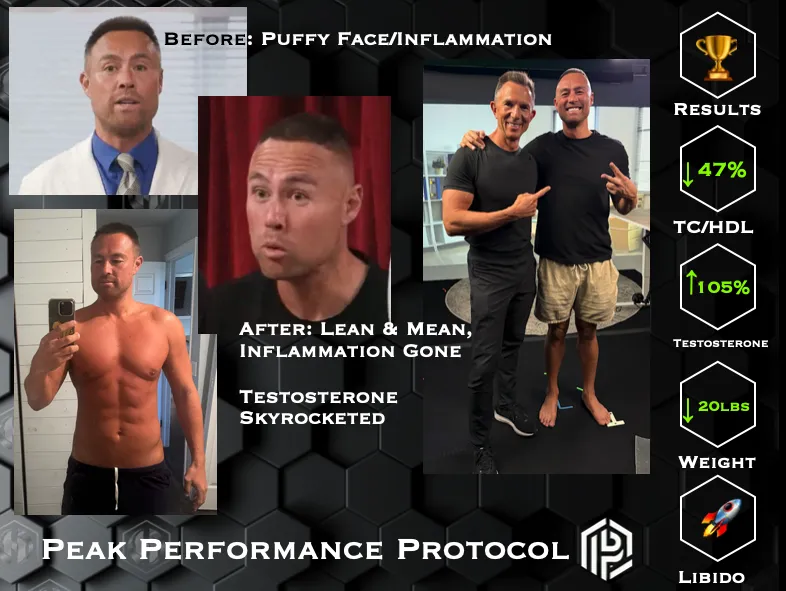
Jim R.
“Back and Better Than Ever”
When this 42-year-old client first came to me, he was frustrated. His energy was decent, but not what it used to be. His focus wasn’t as sharp, and his libido had dropped off. Like many disciplined men, he’d been following a carnivore-style diet successfully for years — until he started “tweaking” what already worked by adding more fruit, honey, and lean meats. That’s when things started to unravel.
Through the Peak Performance Protocol, we ran a full functional lab analysis to uncover what was really going on. The results showed his testosterone had dropped, estrogen had climbed, and his metabolism was out of sync. With that clarity, we adjusted his nutrition back to the foundations that served him best — fattier cuts of meat, zero added sugar, and a precision supplement plan to rebalance his hormones naturally.
In just 90 days, he lost 20 pounds of fat, doubled his testosterone, and reignited his drive. His brain fog lifted, focus sharpened, and energy soared higher than it had in years.
Here’s what he shared in his own words:
“Dr. Andreas has totally made me a believer in doing bloodwork. I never really did until a few months ago, and it’s been incredibly beneficial because it shows you in black and white what the root problems are.
I had been doing great on a carnivore diet for years; but in the last year or so, I tried to fix what wasn’t broken when I added much more fruit and honey, and started eating much leaner meat. Libido tanked; and energy was still good, but not what it was before.
Seeing the lab results with the testosterone lower and estrogen higher than expected showed me for sure that something was definitely a little off. Have since gotten rid of the sugar and switched back to fattier meat, added in a couple of supplements, and I’m back and better than ever. Get your labwork done and let Dr. Andreas analyze it! You won’t regret it!”
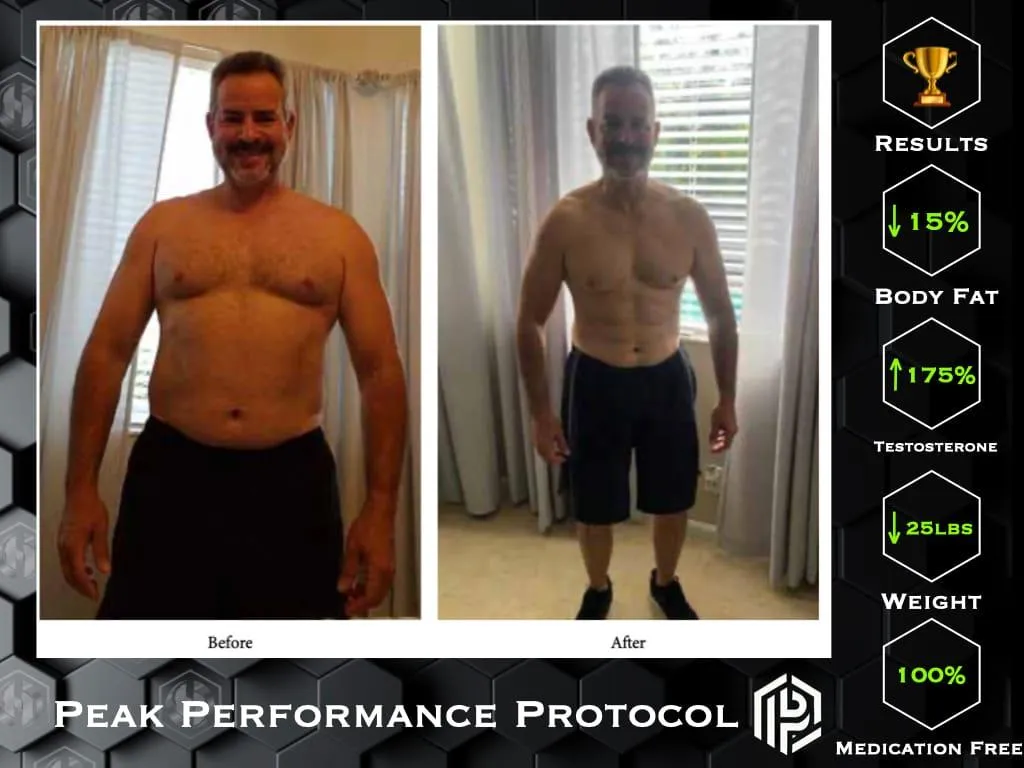
Joquin L. - Entrepreneur
"I cannot express enough how IOH has transformed my life. Thanks to their incredible program, I've gone from having a 'dad bod' to being a sculpted machine that can keep up with my kids and all the activities I love. Whether it's golf or weight training, I'm now able to enjoy things I thought were a distant memory.
I shed nearly 25lbs, and even my lab results, including my Testosterone levels, are now in the healthy range. I feel fantastic, and I owe it all to the inspiration, tools, and unwavering support of the IOH family. I couldn't be happier with my newfound lease on life, and I'm incredibly proud and grateful for the transformation.”
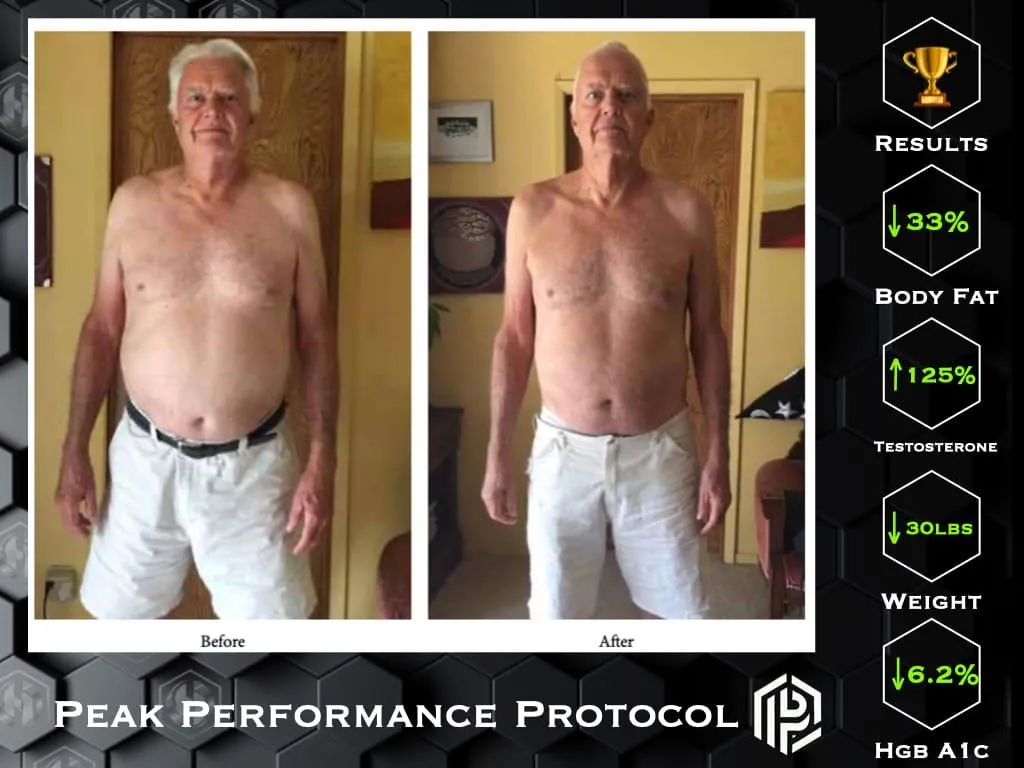
James C. - Retired
"James has shown that it's never too late to embrace 'It's Only Halftime.' After being inspired by one of Dr. Andreas' keynote talks, I made the courageous decision to face my truth, even at the youthful age of 64. I shed nearly 30lbs of stubborn body fat and now feel like I'm in my 40s again.
Not only do I look younger, but I've also been able to significantly reduce one of my medications and completely eliminate the rest."
James took the step to be honest with himself. The question is, are you ready to do the same?
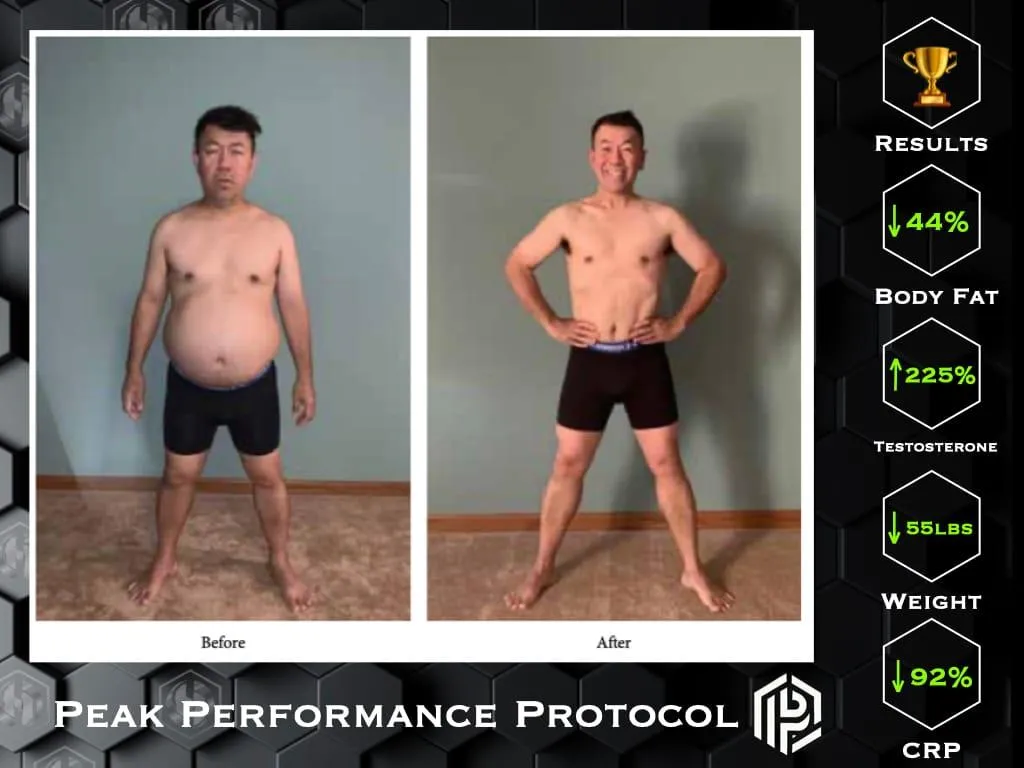
Salicnib M. - Entrepreneur
Salacnib's journey is nothing short of remarkable, showcasing the transformative power of determination and commitment to health. Until recently, he had never experienced what it felt like to be truly fit. Nonetheless, at the age of 49, he embarked on a journey that would see him achieve the best shape of his life.
His infectious smile speaks volumes about the profound changes he has undergone. In a mere three months, Salacnib shed nearly 35 lbs of excess weight, simultaneously reducing his body fat percentage while adding an impressive 15 lbs of lean muscle. The physical transformations are impressive on their own, but the true value lies in the immeasurable benefits to his overall health – benefits that are truly priceless.
Salacnib's story serves as an inspiration, proving that age is no barrier to achieving one's fitness goals and experiencing a significant enhancement in well-being. His commitment to his health is not only a testament to his inner strength but also a beacon of hope for anyone seeking to make a positive change in their life through fitness and lifestyle improvements.

John H. - Televesion Executive
My name is John, and I’m 37 years old. At the time of writing this, I have been practicing the tenets of It’s Only Halftime (IOH) for six months.
A little backstory: As I was rounding out the year 2019, I was in some of the best shape of my life. I exercised regularly, weighed approximately 195 pounds, and followed a fairly ketogenic diet. Towards the end of 2019, I suffered a catastrophic knee injury that kept me off my feet for several months. With the absence of exercise came the absence of food discipline. I began eating pasta, pizza, and sugar-laden foods regularly, along with drinking more than what one would consider a “social amount.”
Slowly but surely, the hard work I had put in to achieve a body and mind of which I was proud turned into something I barely recognized…Fast forward to 2024, and I’ve gained 40-45 lbs. My joints constantly ached, I had persistent heartburn, I developed painful back problems, and my overall mental state was in rapid decline. I’ll never forget the worst day I had.
It was Sunday, February 25th. My wife and I decided to get brunch at one of our favorite local bistros. There, I had several mimosas, crab eggs benedict, potatoes, and a biscuit.
On our way home, I began burping up acid reflux uncontrollably. When I arrived home, I went straight to our master bathroom, stripped off my clothes, and witnessed the shell of the man I had been just five short years ago. Looking at my body, I saw what could only be described as full-body bloating and inflammation.
My fingers were swollen, my eyes barely visible through the puffiness in my cheeks, there were painful belt marks along my gut, and my belly protruded like that of an 8-month-pregnant woman. I no longer recognized the man in the mirror. I was sick. I was in pain. And in that moment of misery, I knew I needed a change. I declared right then and there, “It’s Only Halftime.”
The next day, I phoned Dr. Andreas Boettcher and explained my situation. He greeted my story with such grace. He made me feel like I had already lost five pounds just from the decision to make a change. From there, he created a custom meal plan for me, along with IOH supplements, to ensure the smoothest path to recovery. Within days of switching to a protein-based, no-carb lifestyle, my inflammation began to subside, and for the first time in years, my body began to feel “good.” I’ll admit, it wasn’t always easy, and I
still don’t do everything perfectly, but I can say, now six months later, that I’m a completely new man. I’ve shed 30 pounds of fat and finally like who I see in the mirror every morning.
I think the biggest change I’ve seen is in my mental health. I sleep better, perform better at work, have become a better husband, and my clothes no longer hurt to wear. This may sound silly to some, but I can put my socks on standing up now. There was a time not too long ago when that task would have been impossible and likely led to injury if attempted.
All of the grit it took to achieve a new healthy life came from me. However, the direction, the motivation, the blueprint, and the support came from Dr. Andreas and IOH. I owe so much to the program. It’s not a diet. It’s not a fad. It’s certainly not a health-version of “get rich quick.” What it is, is a map to a healthy and fulfilling life. Everything around me has gotten better due to following the tenets of IOH. I look back to that day in February often and
wonder what I’d feel like today had I not declared, “It’s Only Halftime.”
John H.
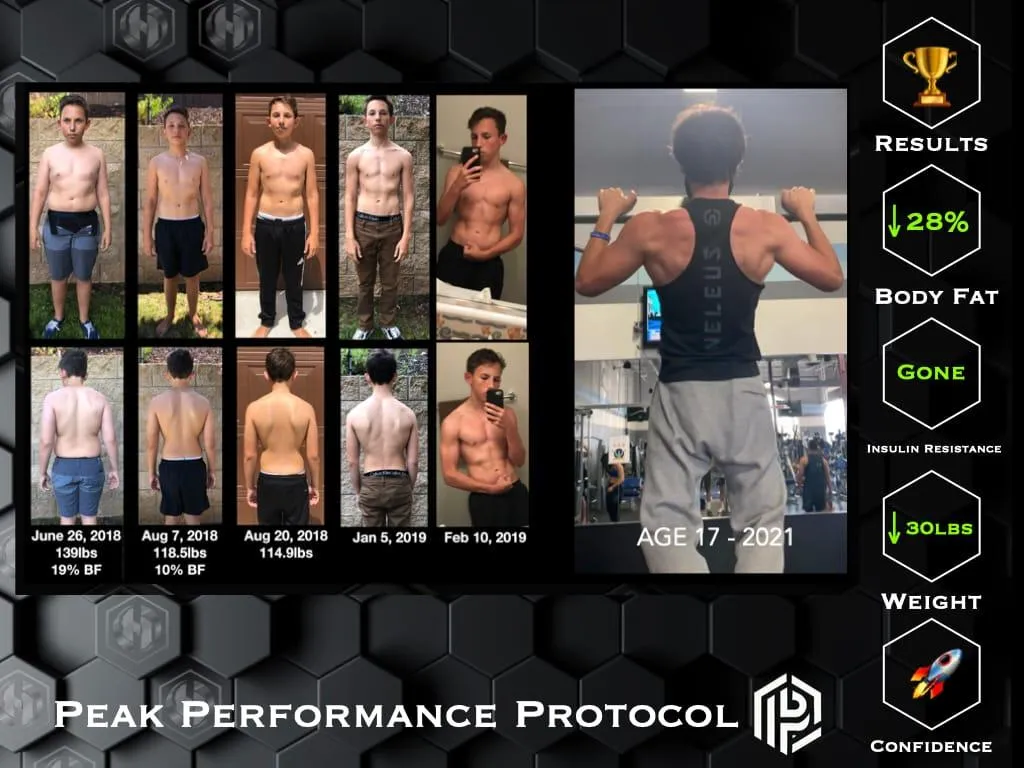
Dr. Andreas' Own Son - Kaiden
My son faced an ongoing struggle with his weight, eventually reaching the point of becoming insulin resistant. Middle school was a challenging time for Kaiden as he battled depression and endured bullying, leaving him with painful memories of being taunted and labeled with hurtful names.
However, one pivotal day, he approached me and firmly declared, "Dad, enough is enough!"
"Dad, I'm ready to reclaim my life. Will you help me?" He made a resolute decision. At just 14 years old, you might be tempted to dismiss his determination, thinking he didn't face the same stress, challenges, or excuses as you. But consider this: he was in the 8th grade, actively playing football, and continually surrounded by tempting junk food.
Despite these obstacles, none of it deterred him. Kaiden willingly rose at 4:30 AM, three to five days a week, to join me for workouts before school. He executed the plan flawlessly, following my guidance on exercise, nutrition, and making healthier choices. What sets him apart, and why he remains my best client to this day, isn't just because he's my son. It's because he never missed a workout, maximized his nutrition, and above all, never indulged in whining, complaining, or making excuses.
If a 14-year-old, who had never experienced being in shape, could make such a decision and sustain it to this day, I ask you, what incredible possibilities still await you?
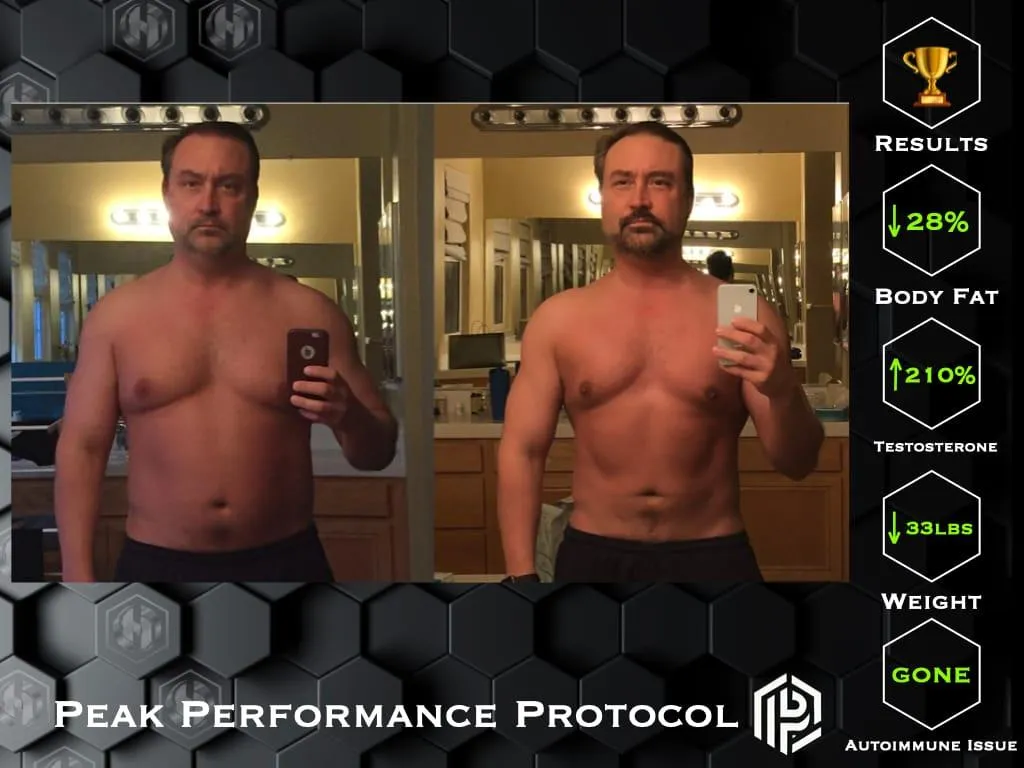
David F. - CEO & Entrepreneur
David’s Story — From Crohn’s Disease to the Comeback Track
David and I go way back — we’ve been close friends for years, racing motorcycles together and pushing limits on and off the track. But then one day, he disappeared. Months went by without hearing from him. When we finally reconnected, I learned the shocking truth: he had been diagnosed with a severe form of Crohn’s disease.
It had gotten so bad that his doctors were preparing to schedule surgery.
He was losing weight, energy, and hope. That’s when he reached out for help.
I took a close look at what he was eating, his habits, and his daily routine. We made a few critical changes using the Peak Performance Protocol — addressing the root causes through diet, lifestyle, and targeted nutritional support.
Within just a few weeks, everything began to change.
His symptoms eased.
His strength returned.
He was able to get back out of the house, back into the gym — and ultimately, back onto his Super Bike.
To the astonishment of his doctors, he canceled his surgery and today lives completely symptom-free — without medications.
In David’s words:
“I had resigned myself to just getting older... living with chronic pain, weight gain, and loss of energy to the point of giving up my love for riding Super Bikes. I tried losing weight many times, only to be frustrated with fad diets and unrealistic workout routines.
Dr. Andreas put me on a custom training and nutrition program — no restrictive diets, no gimmicks — and today, I’m more energetic and flexible at 51 than I was at 30! Not to mention, my Crohn’s symptoms have all but disappeared… without meds!
Best of all, I’m back racing Super Bikes again — with guys half my age.”
David’s story is proof that when you take back control of your health and rebuild from the inside out, the body has an incredible ability to heal itself.
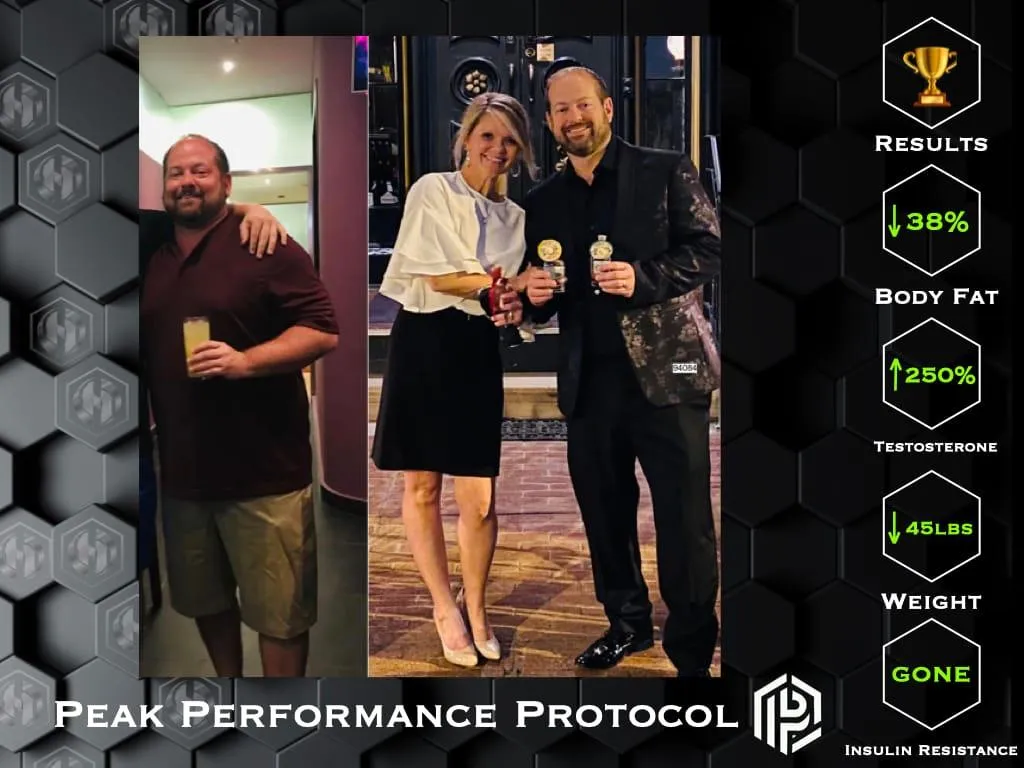
Dr. Doug H. - Optometrist
First off, age is only a number, and although it’s a bit more challenging to get and keep in shape as you age, it’s definitely possible! There are no shortcuts to fitness. It takes discipline, hard work, determination and at times sacrifice but it’s TOTALLY worth it. DrAndreas called me out on facebook when I saw how much weight I put over the years and especially during Covid.
Today, the weight is gone and my health is back beyond measure. I hope that my journey can inspire others to get control of their health and well being just as watching Dr. Andreas’ journey has inspired me.
Whatever you do, don't think about it. Just boook your Discovery Call today.
DrAndreas will not disappoint.
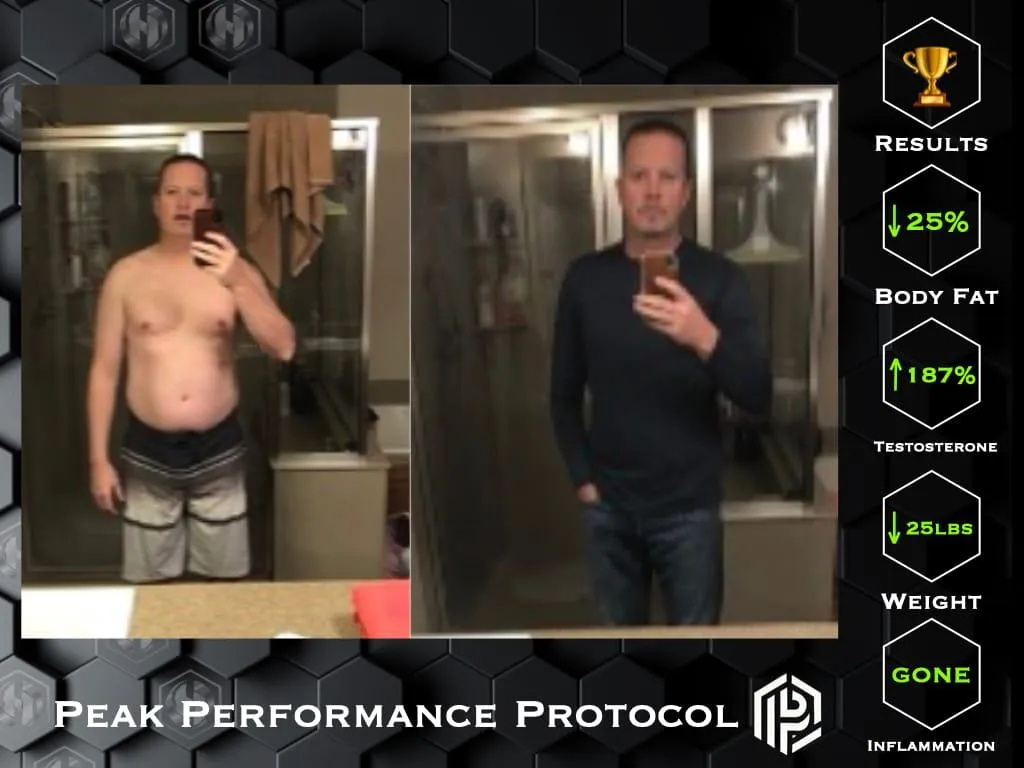
Jayson A.
Let me introduce you to Jayson…father of 4 beautiful daughters who thought playing basketball, wake surfing here and there would be enough to keep him in shape only to realize he was still putting on weight despite “watching what he ate, so he thought”…
He knew something had to change but it had to work with his busy life as a CEO and be sustainable. Not only did we achieve his goals but now years later…he’s not only maintained his 20lb weight loss but reports what little effort he’s new lifestyle requires…a priceless ROI for how he feels while still running up and down the basketball court with guys half his age pain free…

Kyle P. - Entrepreneur
I was a former NCAA athlete and after I graduated from college and got a real job, my health and fitness began to decline. I started a new family and my priorities naturally changed with my new responsibilities. Though subtle at first, my body began to change, weight increased and my energy was down. It was during this time I was introduced to Dr. Andreas.
He helped me to implement small changes that made a huge difference in my workout and nutrition program, including supplementation. As result my health numbers and labs returned to within normal limits and excess weight is gone. I now have the energy to play with my kids.
Thank you Dr. Andreas for helping me to turn my life and health around for the better!

James B. - Entrepreneur
Dr Andreas is probably the most knowledgeable person when it comes to modern medicine combined with a holistic approach. His attention to detail, passion for nutrition and charisma is absolutely unmatched in the medical field.
Whether you are looking to lose weight, looking for more a natural alternative to your health or a professional athlete looking for better performance, Dr Andreas is the one to seek out for help.
Keep up the good work Andreas! I’ve learned so much from you!
Frequently Asked Questions:
What is the Peak Performance Protocol?
The Peak Performance Protocol is one of the most comprehensive, data-driven, and natural approaches to optimizing men’s health, vitality, and longevity — without pharmaceutical dependency.
Most men today are operating at only 30–40% of their true potential. Through advanced lab analysis, genetic testing, and a deep understanding of your lifestyle, nutrition, habits, and goals, we uncover exactly what’s holding you back — then engineer a custom blueprint to restore your body to peak performance.
This isn’t a cookie-cutter program. It’s a precision-based health protocol designed from the inside out — giving your body every opportunity to awaken its inner pharmacy, which will always outperform any outer one.
Founded by Dr. Andreas Boettcher, It’s Only Halftime is a platform that helps high-achieving men reclaim their edge — physically, mentally, and hormonally. Your personalized Peak Performance Protocol is built from your own biomarkers, not guesswork, and is designed to deliver measurable results within 12 weeks.
You’ll feel the difference in every area of your life —
✅ Stronger in the gym and in your daily performance
✅ Sharper in focus and mental clarity
✅ Leaner, more energetic, and more resilient under stress
✅ Prevent, reduce or even eliminate medications of all kinds - NATURALLY
Over time, you’ll build a sustainable rhythm of vitality that keeps you performing at your best — not just for a season, but for life. Because aging is inevitable… but how you age is a choice.
Why is a call required before starting the Peak Performance Protocol?
A call is a mandatory prerequisite before we prescribe any protocol — because your health, performance, and longevity are entirely unique to you. There are no cookie-cutter programs here. Every Peak Performance Protocol we create is a custom-built blueprint designed specifically for you — based on comprehensive lab analysis, genetic testing, goals, habits, lifestyle, and current physical state.
This is not just a call — it’s an application process.
Think of it as an interview that goes both ways. We want to make sure that our Peak Performance Protocol and community are the right fit for you, and equally, that you’re the right fit for what we do here.
During this process, we take the time to understand:
- Your current body composition and overall health status.
- Any past fitness or nutrition experiences — what worked and what didn’t.
- Your habits, daily patterns, and current obstacles.
- Your goals and what success truly looks like for you.
- Any injuries, health concerns, or medications that could affect your results.
- Your work and life schedule, so your plan is realistic and sustainable.
- Any roadblocks or stressors that may have derailed progress in the past.
Once we evaluate all of this, we’ll design a personalized longevity protocol that aligns with your biology, your lifestyle, and your goals. Everything is tailored — from nutrition and training to supplementation and recovery strategies — to help you achieve sustainable transformation and lasting vitality.
Rest assured, this is not a quick-fix, fad, or gimmick. If you’re looking for overnight results or the next trendy shortcut, this isn’t the program for you.
But if you’re ready to face the root causes that brought you to where you are — and you’re committed to taking ownership of your health — then this consultation is your first step toward lasting change.
Book your Peak Performance Consultation today, and let’s determine if this is the right fit for you.
Because your second half can be your best half — when you decide it’s only halftime.
Who will be helping me throughout the program?
IOH clients directly engage with Dr. Andreas to facilitate your progress throughout your journey. However, this is high touch, high service program offers limited availability. Once his calendar is full of clients, you may be directed to waitlist.
How will I know if the program is working?
The results speak for themselves — and often, they start sooner than you think.
Within the first one to two weeks of your Peak Performance Protocol, most of our clients report noticeable improvements:
✅ Better energy throughout the day
✅ Sharper focus and clarity
✅ Reduced inflammation and joint discomfort
✅ Deeper, more restorative sleep
✅ A renewed sense of drive and vitality
As your body begins to restore balance, inflammation subsides, and your cells start functioning more efficiently, these early changes are the first indicators that your body’s “inner pharmacy” is coming back online.
By the end of Phase I, we take a comprehensive look at your progress — not just in how you look in the mirror or what the scale shows, but more importantly, through your biomarkers. Depending on your program level, you’ll rerun lab work so we can objectively measure the internal transformations driving your results.
This is what makes the Peak Performance Protocol so powerful — you don’t have to guess. You’ll see tangible changes in your:
- Hormone balance
- Inflammation markers
- Metabolic efficiency
- Energy production
- Overall vitality and longevity metrics
In short, you’ll feel the difference, you’ll see the difference, and most importantly, you’ll be able to measure the difference.
Because when you give this process an honest effort and execute your custom Peak Performance Protocol, you won’t just look and feel better — you’ll be measurably healthier from the inside out.
What benefits can I expect from my Custom Peak Performance Protocol?
Every day inside our private It’s Only Halftime Community, I receive messages from men whose lives are changing—physically, mentally, and emotionally—often within just the first few weeks of beginning their Custom Peak Performance Protocol.
This is not a cookie-cutter fitness plan. It’s a precision-built system designed from your lab data, genetics, and lifestyle to help your body function as it was always meant to — with strength, vitality, and resilience.
Here’s what you can expect when you commit to the process and give it an honest effort:
🔥 Within the first 3 weeks:
You’ll feel your strength increase measurably as your body begins to operate more efficiently.
Energy levels rise, motivation returns, and stress begins to decline as inflammation subsides and your nervous system stabilizes.
💡 Within the first 30 days:
You’ll notice sharper focus, more consistent energy, and deeper, more restorative sleep.
Your body composition starts to change — dropping excess fat while regaining lean muscle tone and definition.
Most men shed around 10 pounds in the first month and continue to lose an average of 7 pounds per month, all without starvation or endless cardio.
Your face and skin take on a healthier, younger look as inflammation reduces throughout the body.
🧠 Within the first 60 days:
You’ll feel a powerful shift in your mood and mindset — greater confidence, steadier emotions, and a renewed sense of clarity and purpose.
Your muscle mass and recovery capacity continue to improve as your metabolism and hormones naturally begin to rebalance.
💪 By the end of 90 days:
You’ll notice smoother movement, stronger joints, and far less daily pain — especially in the knees, back, and shoulders.
You’ll look, feel, and perform younger — not because of a pill, shot, or prescription, but because your body is healing and regenerating from within.
And while results always depend on your starting point and level of adherence, we’ve seen countless men experience meaningful improvements in every major health marker imaginable — from testosterone and DHEA to vitamin D3, CRP, HbA1c, insulin resistance, triglyceride-to-HDL ratio, homocysteine levels and more — all without a single injection, pellet, cream, or medication of any kind.
Because when you reawaken your inner pharmacy, you no longer need to rely on the outer one.
That’s the power of the Peak Performance Protocol — a complete transformation from the inside out.
How much does the program cost?
First of all, there is no cost to the Peak Performance Protocol — because the true cost is inaction.
Let’s face it, gentlemen… for men our age, you may not get a second chance. Most wake-up calls come in the form of a health crisis — and for too many men, that “first sign” is a heart attack. And here’s the hard truth: nearly 50% of those are fatal.
So no, this isn’t a laughing matter — it’s your life, your vitality, and your second half on the line.
That’s why I’ve had countless clients tell me this has been the single best investment they’ve ever made — because the return isn’t just physical, it’s transformational. The Ultimate ROI is medical independence — the ability to live free of endless prescriptions, recurring doctor visits, and the hidden costs of side effects that rob too many men of their health, energy, and freedom.
Your Peak Performance Protocol is custom-built — not cookie-cutter.
Your investment will depend on the depth and scope of your goals, the level of lab and genetic analysis, and the degree of accountability and coaching support you choose.
But rest assured — we offer multiple tiers and options designed to fit nearly any budget, all with one singular purpose:
To help you optimize your physiology, reclaim your vitality, and become independent of the sick-care system for good.
Because the only real cost…is waiting until it’s too late.
Is your Peak Performance Protocol covered by my insurance.
The short answer is no — and that fact alone tells you everything you need to know about the current state of healthcare.
Insurance companies don’t recognize or reimburse for preventive health optimization, functional medicine, or performance-based longevity programs. Why?
Because they’re designed to manage disease — not to create health.
And that’s the fundamental difference between what we do and what they do.
The It’s Only Halftime Peak Performance Protocol is about prevention, performance, and self-reliance — helping you optimize your body before it breaks down, not after.
We operate as a direct-pay provider, meaning we don’t bill insurance, nor do we provide CPT or ICD-10 codes. This allows us to stay 100% focused on your outcomes — not on insurance paperwork, approvals, or restrictions.
That said, many of our clients use their Health Savings Accounts (HSA) or Flexible Spending Accounts (FSA) to cover program costs, much like they would a fitness membership or wellness service.
At the end of the day, we believe your health is too important to outsource to an insurance company.
True health freedom comes from investing in yourself — not waiting for permission from a system that profits when you stay sick.
Do you accept HSA/FSA Accounts?
Yes!
What makes IOH different from other high end, high touch fitness, lifestyle and longevity programs?
Dr. Andreas Boettcher doesn’t just teach health, longevity, and performance — he lives it.
After overcoming his own health challenges — including autoimmune issues, low testosterone, and a major back surgery — he’s now in the best shape of his life at 55, living medication-free, with a biological age nearly a decade younger than his chronological one.
He’s not a 25-year-old influencer or fitness model selling six-pack shortcuts. He’s a husband, a father, a former Ironman triathlete, and a competitive golfer who understands firsthand the demands, pressures, and responsibilities that come with high performance in business and in life. He’s walked the same path as the men he now coaches — juggling family, career, travel, and health — and knows what it takes to reclaim your edge without sacrificing what matters most.
With the rise of online health programs, flexibility and privacy have become essential — especially for busy professionals and high-performing men who value results without the noise, hype, or gimmicks.
That’s exactly why It’s Only Halftime (IOH) was created.
The Peak Performance Protocol, developed by Dr. Andreas, merges over 33 years of experience as a physician, bodybuilder, Ironman triathlete, performance coach, and biomechanics expert into one powerful system. It integrates functional medicine, nutrition, fitness, and lifestyle optimization — all personalized through advanced lab analysis and genetic testing — to help men regain control of their health, energy, and performance naturally.
Dr. Andreas remains relentlessly committed to staying on the cutting edge of science and technology — from mitochondrial health to hormonal optimization and recovery strategies — ensuring that the Peak Performance Protocol continues to be one of the safest, most effective, and sustainable approaches to men’s health and longevity available today.
Because at IOH, it’s not about chasing youth — it’s about redefining how you age, reigniting your purpose, and performing at your best in every area of life.
I recently had lab and/or genetic testing done, can you accept it?
It depends on the comprehensive nature and depth of the lab or genetic panels that were performed by your primary care provider. In our experience, most standard labs ordered through traditional medicine are woefully incomplete when it comes to identifying the root causes of low energy, hormonal decline, inflammation, and metabolic dysfunction.
Our Peak Performance Lab Protocol evaluates biomarkers across a much broader spectrum — including hormonal balance, mitochondrial function, inflammation, nutrient status, cardiovascular risk, and metabolic efficiency — giving us a true picture of your internal performance.
When it comes to genetic testing, our panels analyze over 130+ genetic SNPs tied to detoxification, methylation, hormone metabolism, neurotransmitter balance, and longevity — far beyond what most commercial DNA tests offer.
That said, every situation is handled case by case. If your labs or genetic data are recent and comprehensive enough, we can often apply credit toward your Peak Performance Protocol, saving you both time and money.
To determine whether your results qualify and to discuss the best next steps, we encourage you to book your complimentary Peak Performance Consultation or Discovery Call.
This allows us to review your current data and craft the most effective strategy tailored specifically to you.
Is Dr Andreas becoming or replacing my Primary Care Physician?
Dr. Andreas is not here to replace your primary care physician. What he offers is something entirely different — a new philosophy of health based on prevention, optimization, and self-empowerment.
As Dr. Andreas often tells his clients:
“I’m not your doctor — your body is.”
Because your inner pharmacy will always be more powerful than any outer pharmacy.
While traditional medicine operates from a reactive, defensive model — waiting for symptoms and treating them with prescriptions — the Peak Performance Protocol takes a proactive, offensive approach. We don’t chase disease; we build resilience. We don’t manage symptoms; we remove their root causes.
Dr. Andreas and his team focus on identifying your risk factors, nutrient deficiencies, hormonal imbalances, and metabolic inefficiencies, then giving you the lifestyle strategies, data, and accountability to correct them naturally. In short, we handle the aspects of health that most physicians simply don’t have the time or framework to address beyond writing a prescription.
That said, Dr. Andreas is always happy to collaborate with your primary care physician — especially when it comes to helping you safely reduce or eliminate unnecessary medications under medical supervision. Over his three decades of practice, he’s helped thousands of men reclaim control of their health, energy, and vitality without becoming dependent on pharmaceuticals.
His approach was born out of personal experience. When faced with an autoimmune condition and low testosterone, he chose not to rely on medications. Instead, he applied the same principles now at the core of the Peak Performance Protocol — lifestyle, nutrition, and mindset — while asking his physician to monitor his progress.
The result? He rebuilt his health from the inside out, proving that with the right system and support, your body is capable of extraordinary recovery and performance — no prescription required.
Because in the end, your health is your responsibility — not your doctor’s.
And that’s exactly what the Peak Performance Protocol is designed to help you reclaim.
Is IOH HIPPA Compliant
Yes. Our tech stack is fully HIPAA-compliant, consistent with the highest standards in data encryption found in a modern medical practice.
I'm not a U.S. Resident, can I still work with Dr. Andreas?
We proudly work with men from around the world who want to reclaim their health, energy, and performance through the Peak Performance Protocol. However, there are a few important distinctions to note.
When it comes to lab analysis and supplements from Dr. Andreas’ physician-formulated line at www.IOHnutrition.com, access may vary depending on your country of residence. Certain lab panels, genetic testing, or supplement formulations may not be available or eligible for international shipment due to regional regulations.
That said, Dr. Andreas offers a wide range of coaching, fitness, and lifestyle optimization programs that can be fully delivered virtually — regardless of location. He also provides custom recommendations for international lab services and comparable supplement options available within your region.
All clients outside the U.S. receive the same high level of personalized support and accountability through the IOH online community, courses, and private coaching programs — ensuring you can still experience the full transformation the Peak Performance Protocol is known for.
So no matter where you live, if you’re ready to take charge of your health and longevity, Dr. Andreas can help guide you every step of the way.
What are my risks for injury?
Although there is always some risk of injury—including from issues such as pre-existing conditions or even flawed workout techniques—IOH workouts are designed to achieve results from 30 minutes of highly manageable, low-risk, regular exercise.
Do I have to travel anywhere to participate?
No. IOH is a tele-wellness platform. For lab work, we have partnerships with phlebotomists who can even come to you to assist you in your home, office or even a hotel. Alternatively, you may also visit an affiliated nationwide patient service center for lab testing.
Do I need a gym membership? What kind of fitness equipment is required?
No, you don't need a gym membership to benefit from our program, although we're happy to tailor your routine for a gym if that's your preference. We offer three options for a personalized workout program:
1. Home Training: Simply send us a photo of your equipment or describe your setup, and we'll provide recommendations and design a program accordingly. You can use basic equipment like resistance bands or even your furniture.
2. Gym Membership: If you have a gym membership, let us know the name and location of your gym. We'll research the facility to understand the equipment available to you and tailor your program accordingly.
3. Hybrid Approach: For those who prefer a mix of gym and home workouts, we can design a hybrid program.
Your plan can be adjusted to fit your lifestyle, whether you're moving, traveling, staying in hotels, or prefer outdoor workouts. IOH adapts to your needs and circumstances.
Are their any dietary restrictions?
Let’s be honest — in today’s world, nutrition has become as polarizing as politics.
Everyone has an opinion, but we’re not in any one “camp.”
At It’s Only Halftime, we focus on a whole-food, common-sense approach that’s rooted in science and designed to support optimal hormone function, insulin sensitivity, and inflammation control.
Our nutrition strategy follows a carnivore–ketogenic-inspired lifestyle, built around real, nutrient-dense foods — the kind your body was designed to thrive on.
This is not a diet and definitely not a starvation program. It’s a strategic lifestyle modification system that incorporates:
- Intermittent fasting to promote metabolic flexibility
- Refeed and training-day meal plans to optimize recovery and performance
- Occasional “cheat” or reset meals to support long-term sustainability
The goal is to help you fuel your body intelligently, not restrict it unnecessarily.
That said, we do not advocate vegan or vegetarian diets as part of the Peak Performance Protocol. In our experience, many clients following these approaches arrive with nutrient deficiencies and poor lab markers that can hinder hormonal balance, recovery, and performance.
However, if you’re already following a plant-based lifestyle and are thriving — with strong labs and excellent results— we respect that and will support you as best we can within your chosen framework.
Ultimately, our nutritional philosophy is about what works, not what’s trendy.
Because at the end of the day, success doesn’t come from restriction — it comes from alignment with how your body was designed to perform.
What happens if I begin to put weight back on?
When clients encounter obstacles in their progress, including weight gain, Dr. Andreas will work with you to build a strategy to address the root causes, whether it’s related to lifestyle, nutrition, exercise, or any combination of these.
Who is the ideal client for IOH?
The ideal client for the Peak Performance Protocol is the man who’s finally ready to take full responsibility for his health and performance — no excuses, no shortcuts, and no more outsourcing his well-being to a prescription pad.
This is a no fad, no gimmick, no BS zone.
We believe in one simple truth: it’s the work that makes you healthy.
The men who thrive in this program aren’t looking for a quick fix — they’re looking for a permanent shift.
They’re tired of the pills, the injections, the empty promises, and the misinformation. They’re ready to take ownership, do the work, and reclaim the strength, energy, and vitality that’s been waiting inside them all along.
Here’s the best part: it doesn’t require endless hours in the gym or a life of deprivation.
Most men are just three to five focused hours a week away from transforming not only their bodies, but their entire lives — physiologically, mentally, and emotionally — from the inside out.
The Peak Performance Protocol is ideal for driven men 35 and older — husbands, fathers, executives, entrepreneurs, athletes — who already understand the value of fitness and discipline but are ready for a smarter, science-backed, and sustainable system to optimize every aspect of their health and longevity.
If you’re ready to stop settling, stop guessing, and start leading your second half with purpose and power —
then it’s time to book your Peak Performance Consultation and begin the process of becoming the man you were designed to be.
Can I still participate if I'm traveling?
Absolutely.
Many of our clients — myself included — live on the road, managing demanding careers, constant travel, and full calendars. But one thing is certain: a busy schedule is never an excuse to neglect your health. There’s no “perfect time” — only the time you decide to make perfect by making yourself a priority.
As someone who’s spent years traveling the world as an international keynote speaker, I know firsthand what it takes to stay on track while living out of hotels, airports, and conference halls. I’ve even spent two months on the Las Vegas Strip working with a client — without gaining a single pound.
That’s the beauty of the Peak Performance Protocol — it’s built around your lifestyle, not the other way around. We tailor your training, nutrition, and recovery strategies to match your travel schedule, work demands, and even temporary injuries or limitations.
If your why is strong enough, we’ll show you how to make it work — anywhere in the world.
Because in this community, there are no excuses… only results.
We encourage you to discuss your travel schedule or lifestyle challenges during your Discovery Call so we can customize your plan to keep you performing at your best, no matter where life takes you.
Do I need training experience?
No, there is no prior training experience required. It does not matter if you have never done resistance training in the past or even exercised before. We work with all different levels of experience and will develop a suitable plan for your needs.
Suppose you have never done any exercises before. In that case, our custom app will help you. It shows you videos step-by-step of how to do the exercises, so you have the proper form, technique and get educated on what each exercise is targeting.
This is what makes us different. We work hard to tailor everything we do with you to your unique lifestyle, goals, and personal challenges.
What about injuries?
That depends on the nature and extent of your injuries — but rest assured, we’ve helped countless men overcome physical limitations and return to performing at their best.
Dr. Andreas has personally been there — crashing jet skis and motorcycles, getting hit by cars, enduring multiple knee surgeries, and even undergoing emergency back surgery. Yet today, at 54, he’s in the best shape of his life — proof that recovery and peak performance can absolutely coexist when approached intelligently.
Through decades of experience in functional medicine, biomechanics, and performance training, Dr. Andreas has guided thousands of men through programs that not only work around injuries but often help them heal stronger than before. Every Peak Performance Protocol is designed with your unique history, current condition, and goals in mind.
During your initial consultation, we’ll discuss the specifics of your situation — the type of injury, current discomfort, any treatments or medications, and your overall objectives. From there, we’ll determine the safest and most effective path forward, whether that means modifying your fitness plan, adjusting recovery protocols, or emphasizing nutrition-based healing strategies.
Because at the end of the day, your kitchen is your chisel and your gym is your hammer — and we’ll help you use both wisely.
Injuries don’t have to define you.
They can become the very reason you rebuild — stronger, leaner, and more resilient than ever before.
Will you work with my doctor to get me off my medications?
Absolutely!
That’s one of the primary goals of the Peak Performance Protocol — to help you become as medically independent as possible.
Dr. Andreas doesn’t just pride himself on his fitness at 54 — what he’s most proud of is maintaining an empty medicine cabinet. And that’s the same outcome we aim for with every client we work with:
to restore your body’s ability to function as its own pharmacy, naturally.
Our process begins by reviewing your health history, current medications, and lab results in detail. From there, we’ll design a customized protocol to help your body normalize key functions — like cholesterol balance, blood pressure, hormone regulation, and metabolic health — through lifestyle, nutrition, supplementation, and movement.
We’ll also collaborate directly with your primary care physician, providing recommendations and updates along the way. In many cases, as your health improves, your physician will begin reducing or discontinuing medications under their supervision.
That said, it’s important to understand that most doctors are unfamiliar with the Peak Performance Protocol and the depth of transformation it creates. You may need to advocate for yourself — and in some cases, even consider finding a provider who supports your goal of true health optimization rather than lifelong pharmaceutical dependency.
Before officially starting your program, we’ll develop a plan based on your initial consultation and lab analysis, outlining the exact steps needed to restore balance to your physiology and give your body the best chance to heal itself — naturally.
Because the truth is, your body was never designed to be dependent on medication.
It was designed to thrive — and that’s exactly what the Peak Performance Protocol helps you do.
Articles
Why TRT Causes Side Effects—And How Fixing Root Causes Restores Testosterone
Learn why TRT triggers side effects in so many men and how insulin resistance, inflammation, poor sleep, and visceral fat—not age—are the real causes of low testosterone. ...more
Hormones ,Nutrition &Fitness
November 19, 2025•9 min read
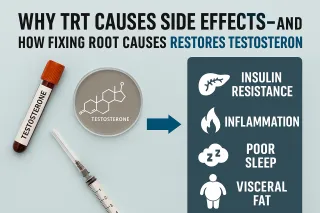
The Silent Saboteur: How Insulin Resistance Is Destroying Men’s Testosterone, Energy, and Performance After 40
Insulin resistance is the hidden driver behind low testosterone, weight gain, low energy, and poor performance in men. This blog reveals how it develops, why it’s overlooked, and what men can do to re... ...more
Hormones ,Nutrition Fitness &Motivation
November 16, 2025•9 min read
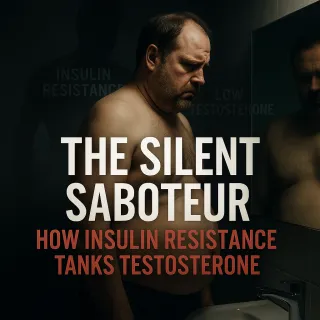
💊 Enclomiphene for Men: Benefits, Risks, Costs & the Root-Cause Truth About “Inside-Out” Testosterone Boosting
Enclomiphene promises “inside-out” testosterone boosting without injections—but the real story is far more complex. Learn how it works, its true risks and limitations, and why symptoms won’t resolve w... ...more
Hormones ,Nutrition
November 14, 2025•7 min read
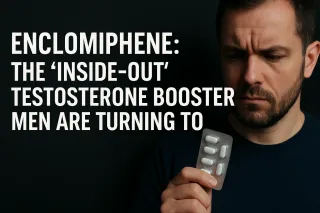
It’s Only Halftime: The Rise of the Modern Man Who Refuses to Fade
Discover what it truly means to rise in the second half of life. It’s Only Halftime challenges men to reject decline, defy dependency, and reclaim their strength, vitality, and purpose — because your ... ...more
Hormones ,Fitness &Motivation
November 12, 2025•5 min read

🛑 STOP Buying the Lie: Low Testosterone Is Not Inevitable as We Age
Low testosterone isn’t aging—it’s a modern health crisis. Learn why your second half can be your strongest yet and how to reclaim natural testosterone, without TRT. ...more
Hormones ,Nutrition &Motivation
November 09, 2025•7 min read
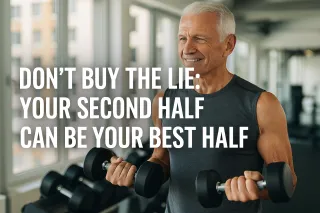
Why Men Still Feel Bad on TRT: The Real Root Causes
TRT may raise testosterone, but without repairing insulin resistance, inflammation, and metabolism, most men still feel low energy and poor performance. Learn why root-cause health must come before th... ...more
Hormones ,Nutrition &Fitness
November 07, 2025•8 min read
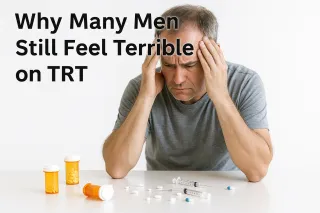
More Rave Reviews

"Now, living a healthy lifestyle doesn’t take much effort on my part. It is who I am and what I have chosen to become. I feel like I am back in my 20s. I have more energy and I get to do all the activities I love to do with my family. I feel very blessed and want to thank Dr. Andreas for all that he has done for me in my healthy living transformation. IOH has been life changing!"
Jayson A. - CEO 7K Metals

"Dr. Andreas knowledge on health, wellness & fitness is incredible! Truly the best of the best with an uncanny ability to coach others to higher levels of human performance. You will not be disappointed having DrAndreas and IOH in your corner if your goal is to live an exceptional life!"
Heidi and Miles Stallard

“Dr. Andreas has such an energy and passion for helping people to achieve a better quality of life through healthy living. Each time he speaks at one of our events, he connects with the audience, shows that he understands, and helps them think about wellness in a whole new way. His approach is positive, real, and most importantly, focused on long-term success. His work is having a great impact on so many lives and we appreciate our relationship with him.”
Rebecca Hansen - CEO Kyani

“Dr. Andreas Boettcher is an inspirational figure to me and to countless others. Not only does he have the know-how and the passion to help others succeed, but his life’s experiences have given him the ability to relate to others with compassion and authenticity. IOH is the real deal!"
Clint McKinely
VP, Worldwide Sales at JAFRA Cosmetics

Why TRT Causes Side Effects—And How Fixing Root Causes Restores Testosterone
Learn why TRT triggers side effects in so many men and how insulin resistance, inflammation, poor sleep, and visceral fat—not age—are the real causes of low testosterone. ...more
Hormones ,Nutrition &Fitness
November 19, 2025•9 min read

The Silent Saboteur: How Insulin Resistance Is Destroying Men’s Testosterone, Energy, and Performance After 40
Insulin resistance is the hidden driver behind low testosterone, weight gain, low energy, and poor performance in men. This blog reveals how it develops, why it’s overlooked, and what men can do to re... ...more
Hormones ,Nutrition Fitness &Motivation
November 16, 2025•9 min read

💊 Enclomiphene for Men: Benefits, Risks, Costs & the Root-Cause Truth About “Inside-Out” Testosterone Boosting
Enclomiphene promises “inside-out” testosterone boosting without injections—but the real story is far more complex. Learn how it works, its true risks and limitations, and why symptoms won’t resolve w... ...more
Hormones ,Nutrition
November 14, 2025•7 min read

A brotherhood of High Achieving Men committed to LIVING their LIFE's True Health Potential Naturally through Mind, Body & Fitness regardless of age. To BE THE EXCEPTION with a LIFE beyond average!
Procrastination is the thief of LIFE...
"If health is your priority, you'll find a way. If it's not, you'll find an excuse."
Dr. Andreas
